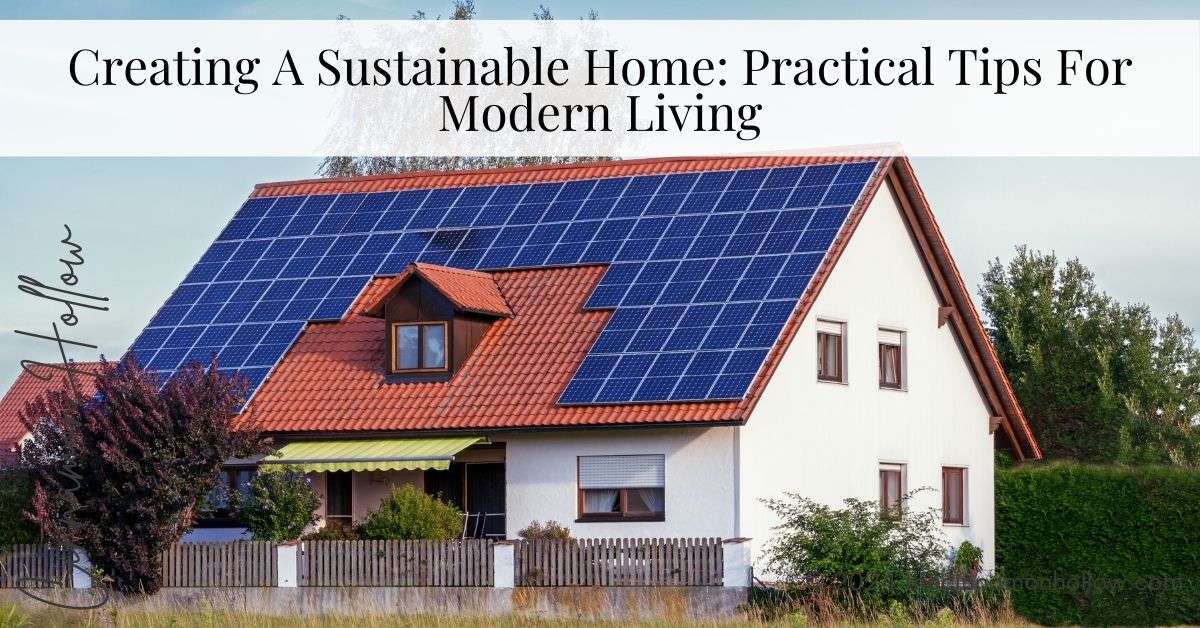Introduction To Sustainable Homes
Sustainable living is more than just a trend; it’s a necessity for the future. By making your home eco-friendly, you contribute to environmental preservation, save on utility bills, and improve your quality of life. A sustainable home focuses on reducing energy and water usage, minimizing waste, and using materials with a low environmental impact. As energy costs continue to increase and worries about climate change grow, an increasing number of homeowners are adopting sustainable methods to ensure a brighter future for both themselves and the Earth.
Energy Efficiency Tips
Energy efficiency is one of the most significant areas where homeowners can improve sustainability. Companies like BrockBuilt are exploring innovative solutions to make sustainable homebuilding more accessible. Simple changes like switching to ENERGY STAR-certified light bulbs and insulating your home correctly can drastically reduce energy consumption. Additionally, installing programmable thermostats and energy-efficient appliances can help you manage energy use more effectively. Smart thermostats are able to learn your routine and change the temperature as needed to prevent unnecessary energy consumption. Sealing windows and doors and adding energy-efficient windows can also prevent heat from escaping during winter and keep your home cool during summer. Such improvements can reduce heating and cooling costs, making your home more comfortable while saving money.
Water Conservation Methods
Water is a precious resource, and conserving it should be a priority for every homeowner. Using low-flow faucets and showerheads, addressing leaks quickly, and planting drought-resistant vegetation in your garden can help conserve water. Think about investing in a rainwater collection system to utilize saved rainwater for landscaping and other non-drinking needs. Small actions such as shutting off the faucet while brushing teeth or saving cold water while waiting for it to warm up can help save more water. Landscaping with native plants requiring minimal watering and mulch to retain soil moisture is also an effective strategy. These methods conserve water and reduce your water bill, making them a win-win for the environment and your wallet.
Sustainable Materials And Products
Choosing sustainable materials for your home construction and renovation projects can make a significant difference. Look for products made from recycled materials, sustainably harvested wood, and other eco-friendly options. Utilizing materials like bamboo, cork, and recycled metal can reduce your home’s environmental footprint. For example, bamboo is a rapidly growing plant that rejuvenates swiftly, serving as a great substitute for conventional hardwood. Recycled metal can be utilized for roofing and various construction purposes, offering strength and decreasing the demand for fresh raw materials. These materials lessen the impact on our natural resources and can add a unique and stylish aesthetic to your home.
Waste Reduction Strategies
Minimizing waste is crucial for a sustainable home. Start by reducing, reusing, and recycling everyday items. Implementing a composting system for organic waste and purchasing products with minimal packaging effectively reduce household waste. EPA’s recycling guidelines offer comprehensive information on how to manage waste responsibly. Additionally, consider buying second-hand furniture or repurposing items for new uses. For example, old wooden pallets can be transformed into garden planters or furniture. These practices reduce the amount of waste going to landfills, foster creativity, and add a personal touch to your home décor.
Home Gardening For Sustainability
Home gardening is not just a relaxing hobby; it’s also an excellent way to promote sustainability. Growing your vegetables and herbs reduces the need for store-bought produce, often with a higher carbon footprint. Organic gardening techniques and composting from kitchen scraps can make your garden even more eco-friendly. Home gardens can provide a reliable source of fresh produce without the environmental costs of transportation and packaging. Additionally, plants like herbs and certain vegetables can be grown indoors, making gardening accessible even to those with limited outdoor space. This ensures fresh, organic produce and can be a rewarding and educational experience for families.
Community And Environmental Impact
Sustainable practices extend beyond the confines of your home. Joining local community initiatives focused on environmental conservation can amplify your efforts. Support local businesses that prioritize eco-friendly products and practices. Collective actions can lead to significant positive changes in the community and the overall environment. Participate in community garden projects, cleanups, and other environmental efforts to contribute to a more substantial cause. Such involvement can foster community spirit and provide a platform for sharing ideas and resources. When communities work together towards common sustainability goals, the impact can be substantial, leading to healthier, more resilient neighborhoods.
Final Thoughts
Creating a sustainable home is a journey that starts with small changes but can lead to profound impacts. You can make your home more environmentally friendly by focusing on energy efficiency, water conservation, sustainable materials, waste reduction, and community involvement. These efforts benefit the planet and contribute to a healthier and more fulfilling lifestyle. Embracing sustainability can transform how we live and interact with our environment, paving the way for a greener, more sustainable future.
Key Takeaways
- Eco-friendly homes are becoming increasingly popular and essential for environmental and financial reasons.
- Simple changes and smart choices can make a big difference in reducing your home’s carbon footprint.
- Emphasizing sustainability can enhance your quality of life and save you money in the long run.


